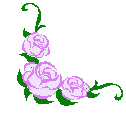The Torah (1)
A series of laws and commandments?
André H. Roosma
10 March 2012
Today something about the Torah;
the first five Bible books, written by Moses.
One of my dictionaries gives for this word: תּורה - Torah (8451-8452): law, direction,
instruction, custom.
That first word: ‘law’ has become deeply ingrained in
many Bible translations and in the thinking of people.
“The Torah, yes that was the law for Israel, of the old
covenant!” I recently heard someone say. To be even clearer he
added: “that was for those times, for Israel. It has no relevance for
us as Christians now anymore! After all, didn’t Paul already clearly
say that the law is not valid for us
anymore?!”
On the other hand: recently I came across a website that proclaimed loudly: “Follow Rabbi Yeshua requires
Torah-observance”. This statement was motivated there, among others,
from the fact that Jesus Himself and His apostles kept the Torah.
Not the legalistic explanation that some Pharisees had added to it, but they
did keep the pure Torah itself.
What about this? For me enough reason dig a bit deeper into this
subject...
One of the first things that I do in such cases, these days, is to have
a look at how the word Torah explains
itself in the oldest, pictographic, Biblical script.1
That writes:     .
This can be interpreted as (read from right to left): .
This can be interpreted as (read from right to left):
 : cross, mark, underwriting, confirmation, end – : cross, mark, underwriting, confirmation, end –
 : tent pin; security, connection, attachment,
safety, to connect, to secure – : tent pin; security, connection, attachment,
safety, to connect, to secure –  :
head (sideways); (higher) other / Other (God) – :
head (sideways); (higher) other / Other (God) –  : figure
with raised hands and bent knees; to worship, to praise, joy, to celebrate,
awe, wonder, surprise, to live. : figure
with raised hands and bent knees; to worship, to praise, joy, to celebrate,
awe, wonder, surprise, to live.
All together (cross/mark - to attach - God/other - to celebrate/
worship/ live) we can read this as: (cross) mark
of secure attachment of the Other (God) Whom we worship with joy, or as: (cross) mark of God’s covenant / the
covenant with others, to be celebrated and lived out with awe.
My dictionaries note with תורה - Torah that this word is derived from the verb
ירה - yarah,
originally: ורה -    - warah;
or from ירא -
yara’, originally: ורא - - warah;
or from ירא -
yara’, originally: ורא -    - wara’.
Warah can be interpreted as: to worship or let live the tent pins of
the other/Other; wara’ as: to give priority to or to cherish the
sticks-in-the-ground/ cuttings/sprigs of the other/Other.
This included: throwing yourself facedown before the other/Other (amidst the tent pins), or tending, watering the
cuttings/sprigs of the other/Other.
The first developed into: to throw; the second into: let water stream; to
channel it to a destination. - wara’.
Warah can be interpreted as: to worship or let live the tent pins of
the other/Other; wara’ as: to give priority to or to cherish the
sticks-in-the-ground/ cuttings/sprigs of the other/Other.
This included: throwing yourself facedown before the other/Other (amidst the tent pins), or tending, watering the
cuttings/sprigs of the other/Other.
The first developed into: to throw; the second into: let water stream; to
channel it to a destination.
Torah then is to direct worship, or one’s life, like you would channel that
water via channels and little dams to the right place, or like you directed
a javelin at a goal.
Whichever of these meanings may approach the most original closest: for
me they do totally not sound like ‘law’ or ‘rules’!
Even according the more common derivation ‘guidance’,
‘instruction’, ‘direction’, or
‘regulation’ are better terms.
What I consider remarkable in the explanation from the old script, is that
the Torah -     - refers
intrinsically already so clearly to the cross!
And to our bond with God!
And to worship! - refers
intrinsically already so clearly to the cross!
And to our bond with God!
And to worship!
I become curious!
Hallelu YaH !
In next editions: What do we find in the Bible about
the Torah
and about the goal and character of the Torah?
Notes
Iris
A testimony: that when God saved me, a wretch
and bound in evil. He delivered me from hell itself and led me to the Torah...
That is to read His ways and that by doing so, as a new believer, I would be
safe and in covenant with Him. I rejoiced to feel the protection this holy
life-fence put around me. The Lord did say it is He that sanctifies us... I
believe it refers to walking in Torah. Of course, when I stumbled, the Holy
Spirit opened the word and enabled me. Thank you heavenly Father for giving
us your Torah... Now I am wiser than my enemies!
André (author)Thanks for your testimony, Iris!
Yes, the ways of YaHUaH, as
layed out in the Torah, are like a holy life-fence, for our protection,
given to us by Him, our heavenly Father, out of His great love! And indeed,
He is the One Who sanctifies us, through His Spirit at work in us. All
thanks and praise be to Him! Hallelu YaH !
This is a sequel to: The Shema‘ – the First Testament declaration of faith (1),
Part (2),
Part (3),
Part (4),
Part (5), and
Zakhar
beShem YaHUaH – remembering
/ glorying in the Name of YaHUaH, from Psalm 20.
Next article: Torah - Part (2) Throughout the First
Testament.
|


